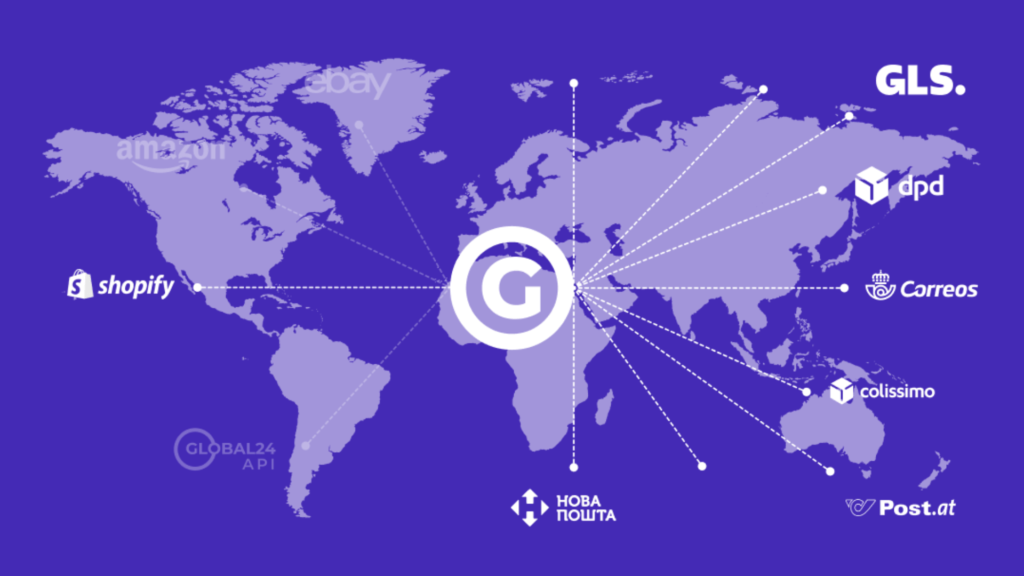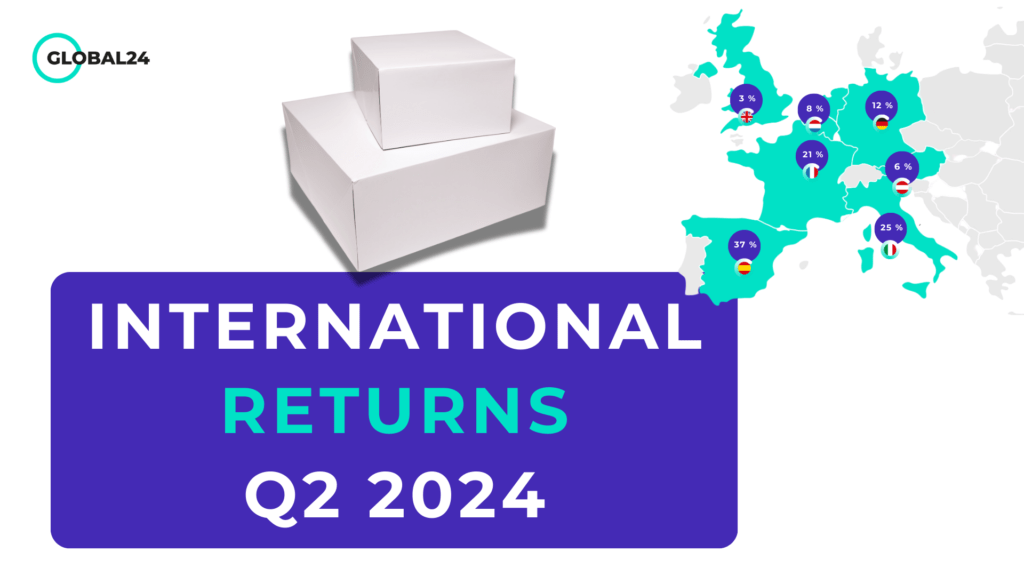How do you optimise your online shop sales with Shopify Reports?
Managing an online shop is not just about displaying products, but also about constantly monitoring sales performance and adjusting your strategy. With Shopify Reports, you can fully understand what is working and what needs improvement. In this article, you’ll learn how to use Shopify Reports effectively to optimise your operations and increase revenue. You’ll learn the key metrics you should be tracking and how to use this data to make better business decisions.

Publication date:
Introduction to data in Shopify
In the world of online sales, salespeople can be divided into two categories: those who run their shop analytically and treat sales like a science, and those who follow their gut feeling without paying attention to the numbers.
The former group, who approach the shop like maths, always wins. Why? Because selling online is actually a game of numbers and statistics. The key to success lies in the ability to analyse and understand the data behind the sales results.
Mathematics in online sales – key variables
Understanding which metrics affect sales performance is fundamental to running a successful online shop. Any seller who wants to succeed should track and optimise several key metrics:
- AOV (Average Order Value) – the average order value placed by customers on your shop. Increasing your AOV means that you earn more on each sale, which directly increases your revenue. An increase in AOV can be achieved by introducing a more expensive assortment, a cross-selling strategy or advanced up-selling offering the opportunity to match additional products to an order.
- Number of Orders – the number of completed transactions in your shop. Of course, the more orders, the more revenue, but an increase in the number of orders alone is not enough. It is important that they are of the highest possible value. An increase in orders can most often be achieved through increased traffic or improved conversion rates.
- Traffic – Means the number of visitors to your online shop. Traffic is the key – the more users visit your shop, the greater the chance of sales, but this number must be combined with a high conversion rate to make sense. It is also worth noting that it is not only the quantity but also the quality of the traffic brought in that is important here. If your campaigns are optimised for maximising clicks then despite having more traffic it will be less valuable than traffic optimised for maximising conversions or value.
- Conversion Rate – This is the percentage of visitors who actually make a purchase. Even with high traffic, a low conversion rate means that your shop is not converting users into customers. Optimising this rate is crucial to long-term success, and can be achieved by improving and expanding your offerings and improving your online shop and its functionality.
The key to effective selling is to understand how these variables affect each other. Vendors who analyse this data can effectively identify areas for improvement, test different strategies and continuously optimise their shop for better results. This is where the advantage lies – salespeople who think mathematically, with the right data in hand, are always more likely to succeed.

Key data in the dashboard on Shopify
The Shopify dashboard is the command centre of any online shop. It’s where you’ll find key information about how your business is performing, which products are generating the most profit and where potential problems lie. Understanding the key metrics available on your dashboard is essential to making informed decisions that will translate into increased sales and better customer service.
Find out why you should bet on Shopify when selling overseas: 7 reasons why you should bet on Shopify when selling overseas
There are a number of metrics available on Shopify to help you monitor your shop performance. Here are the most important ones that every retailer should pay close attention to:
- Total Sales
This is a basic indicator that shows the total value of all orders completed over a certain period of time. Monitoring this indicator allows you to assess the overall financial health of your shop and verify the effectiveness of your marketing efforts. - Conversion Rate
The conversion rate shows what percentage of visitors to the shop make a purchase. A high conversion rate indicates the effectiveness of the shop’s website and product offering. If this rate is low, it is worth analysing whether the navigation, shopping basket or purchasing process is optimal. The rule of thumb for optimal and correctly converting values is 4 / 2 / 1, i.e. for every 4 additions to the shopping basket, we should achieve 2 order transitions and 1 order. - Website traffic (Traffic)
Measures the number of visitors to your shop over a given period. Traffic is a key element of sales success, but must go hand in hand with proper conversion optimisation to convert visitors into customers. - Average Order Value (AOV)
This indicator shows the average amount that customers spend per transaction. An increase in AOV can be achieved by offering product bundles, discounts for larger purchases or by suggesting complementary products. The AOV does not include delivery costs. - Number of orders
This is the number of orders placed over a defined period of time. Regular monitoring of this metric helps to assess whether the shop is generating a sufficient number of transactions and to identify seasonal trends. - Sessions by location (Sales by Location)
This metric shows which regions your customers come from. Analysing sales by location allows you to better understand the markets worth investing in and to tailor your marketing campaigns to local needs. - Sales by Product
With this indicator, you can identify which products are selling best and which need to be promoted or discontinued. Monitoring sales by product helps you to optimise your product range and make purchasing decisions based on real data. - Number of returning customers (Returning Customers Rate)
This indicator measures what percentage of customers return to your shop for repeat purchases. Returning customers are usually more valuable because they are loyal to the brand and spend more over time. A high returning customer rate indicates strong brand loyalty and a high level of customer satisfaction.
Monitoring these key indicators allows you to more fully control the performance of your online shop. Analysing and optimising this data will help you better understand what is working in your shop and where there are areas for improvement. By regularly reviewing your Shopify dashboard, you have the ability to react quickly to changes in customer behaviour, leading to better sales results
Sales optimisation for selected countries with the highest conversion rates
Expanding into new international markets can be a key step in the development of an online shop, but its effectiveness depends on data analysis and the appropriate optimisation of marketing activities. Shopify Reports provides valuable information that allows you to identify the countries with the highest conversions and optimise your sales strategy for specific markets. This allows you to focus your resources on the regions with the highest sales potential, resulting in increased revenue and better results.
How do you optimise sales for selected countries based on Shopify reports?
In order to effectively optimise sales for your selected markets, you need to regularly analyse several key metrics available in Shopify Reports. Here are the steps to take:
1. Conversion rate analysis by country
The first step to optimising sales in international markets is to analyse your conversion rate by country. Shopify Reports offers reports that show how many visitors to your site in a particular country make a purchase. A high conversion rate means that a particular market is responding well to your offer and that your shop is meeting the expectations of customers in that region.
How to do it:
- Go to the Sales Reports tab in Shopify and select the Conversion Rate by Location report.
- Analyse the countries with the highest conversion rate and pay attention to those with high potential, i.e. countries with high traffic but an even lower conversion rate.
2. Tailor your product offering to local preferences
Once you have identified high-converting countries, it is worth tailoring your product offering to their specific needs and preferences. Shopify Reports can help you understand which products sell best in a particular market.
How to do it:
- Use the Sales by Product and Location report to see which products are most popular in a particular country.
- Based on this, you can introduce relevant promotions, highlight the most popular products in a particular market or expand your offerings to include products that may meet local needs.
3. Optimise pricing and delivery costs
Pricing and delivery costs can significantly impact conversion rates in different countries. Using Shopify Reports, you can analyse the impact of these variables on sales and adjust prices to be more competitive in specific markets.
How to do it:
- In Shopify Reports, you can track average order value (AOV) by country. A high average order value may suggest that customers are willing to pay more, giving you room to optimise your prices.
- Analyse your delivery cost data. If cart abandonment is higher in your country, consider lowering shipping costs or introducing free delivery from a certain purchase amount.
As Global24, we have a direct integration with Shopify, making returns and international shipping for your customers even easier.

Shop localisation and personalisation
In order to increase conversions in selected countries, it is important that the shop is customised to local preferences. Shopify allows you to add language versions of your shop, as well as to present prices in local currencies, which can significantly influence customers’ purchasing decisions.
How to do it:
- Shopify allows you to create shops in different language versions. Use the site traffic and conversion rate reports to see if adapting your shop to the local language translates into increased conversions.
- Enter local currencies – Shopify automatically converts prices to the currency of the country, giving customers a more comfortable shopping experience.
5. Target ads and marketing campaigns
By analysing Shopify’s reports, you can also tailor your ad campaigns, targeting markets with the highest conversion potential. Monitoring the effectiveness of your campaigns in combination with conversion data will help you optimise your marketing spend.
How to do it:
- Use the Traffic by Location report to see where your traffic is coming from. Combine this with conversion data to find out which ad campaigns are generating the best results in a particular country.
- Invest more in ads targeting markets with high conversion rates by optimising campaigns for content and products that match local preferences.
6. Analyse abandoned baskets by country
A high shopping cart abandonment rate can indicate problems with the shopping process in a particular country. Shopify Reports offers tools to monitor this data, allowing you to identify and fix issues that may be discouraging customers.
How to do it:
- Review the Abandoned Checkouts by Location report to see in which countries cart abandonment is most common. Analyse the reasons for abandonment and adapt your purchasing process or returns and delivery policy to local needs.

Shopify Reports - Your key to more international sales
Optimising sales in international markets is a key step to growing your online shop. With Shopify Reports , you can identify the countries with the highest conversions and adapt your sales strategy in terms of local preferences, prices, products and marketing campaigns. As a result, you focus your efforts on the most profitable markets, which will translate into increased revenue and customer satisfaction.
For more information about Shopify Reports and help with building or optimising your shop, please contact Szymon Ciba and Time4Ecommerce, who is also an author of this publication.
And if you need to handle overseas shipments or returns with fast and direct integration with Shopify, come to us ! We offer the fastest overland delivery times to the UK with customs clearance included and local shipping and returns warehouses in 8 other countries (Germany, Spain, France, Italy, Austria, Belgium, Netherlands, Ukraine).
Do you want to be up to date?
Subscribe to the newsletter
Subscribe to the CROSS-BORDER LETTER newsletter! Learn about news, tricks and secrets in foreign logistics. Check how to sell abroad and achieve more benefits.





